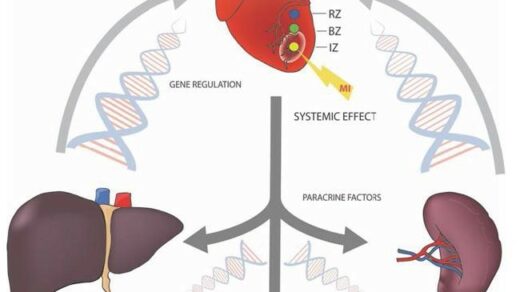“The results demonstrated that the minimal TIMP variants, mTC1, and mTC3, effectively inhibit MMP activity underscoring their potential to limit tumor invasion and progression.”
Scientists have engineered small, targeted proteins that can penetrate brain cancer cells and prevent them from invading healthy tissue, offering a promising new approach to treating glioblastoma multiforme (GBM), one of the deadliest forms of brain cancer. This strategy was developed by researchers at the University of Nevada, Reno, and published recently in Oncotarget.
The Challenge of Treating Glioblastoma Multiforme
Glioblastoma is an aggressive and fast-growing brain tumor that infiltrates healthy brain tissue, making complete surgical removal nearly impossible. Standard treatments like chemotherapy and radiation can slow its growth but rarely prevent it from returning. One major reason for this invasiveness is a group of enzymes known as matrix metalloproteinases (MMPs), which break down surrounding tissue to allow cancer cells to spread. Among these, MMP-9 plays a particularly important role in driving tumor progression and resisting existing therapies.
Attempts to block MMPs using small-molecule drugs have failed in clinical trials due to problems like poor selectivity and harmful side effects. Researchers have been searching for safer, more targeted methods to interfere with these enzymes and limit glioblastoma’s spread.
The Study: Engineered Proteins to Inhibit Tumor Invasion
In the study called “Effect of TIMPs and their minimally engineered variants in blocking invasion and migration of brain cancer cells,” researchers Elham Taheri and Maryam Raeeszadeh-Sarmazdeh investigated tissue inhibitors of metalloproteinases (TIMPs), which are natural blockers of MMPs, and their engineered modified versions made to work better. Specifically, the team studied TIMP-1, TIMP-3, along with two engineered molecules, mTC1 and mTC3, in laboratory cell models of GBM.
According to the researchers, the minimal TIMP variants were designed with smaller molecular sizes to enhance their ability to enter cells and deliver their cancer-blocking functions more effectively. One of the variants was also equipped with a cell-penetrating peptide to help it pass through the blood-brain barrier—a key obstacle in brain cancer treatment.
The Results: Reduced Invasion, Minimal Toxicity
The engineered TIMPs significantly reduced the ability of glioblastoma cells to move and invade surrounding tissue, performing as well as or better than the natural TIMPs in wound healing and invasion tests. At low doses, they showed minimal toxicity to healthy cells, suggesting a safer profile than previous MMP-inhibiting drugs.
When combined with the cell-penetrating peptide, the engineered protein demonstrated improved entry into cancer cells, successfully reaching its targets and carrying out its blocking effect. This is particularly significant because many cancer therapies fail to reach the brain due to the protective blood-brain barrier, which prevents drugs from reaching their destination.
The Breakthrough: A Smaller, Smarter Tool Against Glioblastoma
This study represents a major advancement in the fight against GBM. The minimal TIMP variants (mTC1 and mTC3) offer a focused and potentially safer alternative to conventional drugs. Their small size and engineered design allow them to block the cancer-promoting enzymes more precisely, increasing the probability of reaching their targets deep within brain tissue.
The Impact: Toward Targeted, Safer Brain Cancer Therapy
With few effective treatments currently available for GBM, these engineered TIMPs may offer a new, viable therapeutic option. Their ability to block MMP-9 specifically, without affecting healthy cells, positions them as promising candidates for future drug development. They may further enhance patient outcomes when combined with currently available treatments like immunotherapy or chemotherapy.
Future Perspectives and Conclusion
Although the study was performed in laboratory cell models, the findings are highly promising. The next phase of research will involve testing these engineered TIMPs in animal models to evaluate their safety and long-term effectiveness. Researchers also aim to explore how these engineered proteins might enhance current treatments or prevent cancer recurrence.
Given GBM’s aggressive nature and limited treatment options, this study represents a major step forward. If future research supports these findings, engineered TIMPs could become a critical tool in controlling tumor spread and improving survival and quality of life for patients facing this devastating disease.
Click here to read the full research paper in Oncotarget.
_______
Oncotarget is an open-access, peer-reviewed journal that has published primarily oncology-focused research papers since 2010. These papers are available to readers (at no cost and free of subscription barriers) in a continuous publishing format at Oncotarget.com.
Oncotarget is indexed and archived by PubMed/Medline, PubMed Central, Scopus, EMBASE, META (Chan Zuckerberg Initiative) (2018-2022), and Dimensions (Digital Science).
Click here to subscribe to Oncotarget publication updates.
For media inquiries, please contact media@impactjournals.com.



